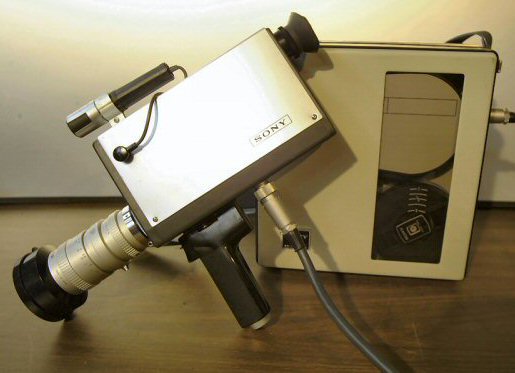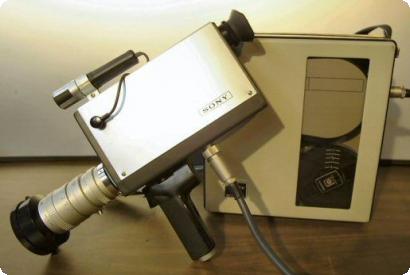Please wait a few moments while we process your request

Mona Jimenez
The Artist Instrumentation Database Project
Steve Rutt and Bill Etra, the designers of the Rutt-Etra, created their device in New York City in the early 1970s. The machine electronically interferes with television display, allowing the user to affect parts of the picture - stretching, shrinking, flattening, rotating, etc. - and to move these parts independently within the screen area. These effects, which we now take for granted, were not part of television production of the time. The Rutt-Etra was in fact briefly marketed as a production device, but to this day, for Etra and others, it also functions as a real-time performance tool. For more information on the Sandin IP and the Rutt-Etra, please see the Video History Project (1), and the instruments’ files in the Foundation’s web site (see "related text"). In addition, Steina and Woody Vasulka’s site (2) and the AudioVisualizer site (3) contain primary and secondary documents relating to the tools.
In addition to creating records for the Sandin IP and Rutt-Etra, I also developed test data for two mass market devices – the Sony AV3400 Porta Pak and the Amiga 2000 computer – with which I had basic familiarity. The Porta Pak was among the first portable video systems available to artists and independent producers and was used extensively in the 1970s. It utilized the 1/2" open reel video format. Amiga computers became popular in the beginning in the 1980s and were used for graphics, image processing, animation, titling, multimedia authoring, and video effects.
My research for the Artist Instrumentation Database fell into four main categories: examining primary and secondary documentation on the devices, their inventors and other key individuals; conducting video and audio interviews; researching standards and practices for description; and investigating database structures.
Utilizing the Steina and Woody Vasulka fonds at the CR+D and the Video History Project Web site, I familiarized myself with the IP and Rutt-Etra. In preparation for the Pioneers of Electronic Art project, the Vasulkas had gathered much material, which is now archived at the CR+D. I conducted interviews with Dan Sandin and artist Bob Snyder, who also built a version of the IP. Artists Benton Bainbridge and Hank Rudolph were videotaped demonstrating the use of the Rutt-Etra and IP respectively, which provided me with technical details on the devices. I reacquainted myself with the Porta Pak and Amiga 2000. These aspects of my research helped me determine what information should or could be captured by a database.
As I did not want to ‘re-invent the wheel,’ I searched for sample templates for describing machines in general. While I found several conversations very helpful – particularly with the Cinémathèque québécoise and the Canadian Science and Technology Museum – I did not find any models that seemed complete enough. Sherry Miller Hocking of the Experimental Television Center had developed a very useful database containing some of the same tools, which was very helpful. I also consulted library, archival and museum standards, specifically the Canadian Anglo-American Cataloging Rules, Second Edition (AACR2), the Rules for Archival Description (RAD) (4) and the Information Categories of the International Guidelines for Museum Object Information (SIDOC) (5). While the template does not strictly conform to any of the standards, practitioners from these professions will no doubt notice it contains familiar field names and terminology.
I tried to imagine what fields would be necessary to allow for standardized input yet be flexible enough to accurately describe both custom and commercial devices. For example, for custom devices, the “Inventor/Designer” field is more important and useful than for equipment that is mass-produced. This field can simply be left blank for mass-produced equipment. Another example is the “Manufacturer or Builder” field. Neither the Sandin IP nor the Rutt-Etra were mass produced, so the term manufacturer did not apply. I realized that field names needed to be inclusive in this way, i.e., one field for Manufacturer (of mass produced items) or Builder (of custom items).
Other decisions made during the development process were structural: the extent to which the database was relational and the decision to create a “whole and part” structure.
In addition to creating records for the Sandin IP and Rutt-Etra, I also developed test data for two mass market devices – the Sony AV3400 Porta Pak and the Amiga 2000 computer – with which I had basic familiarity. The Porta Pak was among the first portable video systems available to artists and independent producers and was used extensively in the 1970s. It utilized the 1/2" open reel video format. Amiga computers became popular in the beginning in the 1980s and were used for graphics, image processing, animation, titling, multimedia authoring, and video effects.
My research for the Artist Instrumentation Database fell into four main categories: examining primary and secondary documentation on the devices, their inventors and other key individuals; conducting video and audio interviews; researching standards and practices for description; and investigating database structures.
Utilizing the Steina and Woody Vasulka fonds at the CR+D and the Video History Project Web site, I familiarized myself with the IP and Rutt-Etra. In preparation for the Pioneers of Electronic Art project, the Vasulkas had gathered much material, which is now archived at the CR+D. I conducted interviews with Dan Sandin and artist Bob Snyder, who also built a version of the IP. Artists Benton Bainbridge and Hank Rudolph were videotaped demonstrating the use of the Rutt-Etra and IP respectively, which provided me with technical details on the devices. I reacquainted myself with the Porta Pak and Amiga 2000. These aspects of my research helped me determine what information should or could be captured by a database.
As I did not want to ‘re-invent the wheel,’ I searched for sample templates for describing machines in general. While I found several conversations very helpful – particularly with the Cinémathèque québécoise and the Canadian Science and Technology Museum – I did not find any models that seemed complete enough. Sherry Miller Hocking of the Experimental Television Center had developed a very useful database containing some of the same tools, which was very helpful. I also consulted library, archival and museum standards, specifically the Canadian Anglo-American Cataloging Rules, Second Edition (AACR2), the Rules for Archival Description (RAD) (4) and the Information Categories of the International Guidelines for Museum Object Information (SIDOC) (5). While the template does not strictly conform to any of the standards, practitioners from these professions will no doubt notice it contains familiar field names and terminology.
I tried to imagine what fields would be necessary to allow for standardized input yet be flexible enough to accurately describe both custom and commercial devices. For example, for custom devices, the “Inventor/Designer” field is more important and useful than for equipment that is mass-produced. This field can simply be left blank for mass-produced equipment. Another example is the “Manufacturer or Builder” field. Neither the Sandin IP nor the Rutt-Etra were mass produced, so the term manufacturer did not apply. I realized that field names needed to be inclusive in this way, i.e., one field for Manufacturer (of mass produced items) or Builder (of custom items).
Other decisions made during the development process were structural: the extent to which the database was relational and the decision to create a “whole and part” structure.
© 2005 FDL
(1) Video History Project : http://www.experimentaltvcenter.org/history/search/search.php3
(2) Steina and Woody Vasulka : http://www.vasulka.org/
(3) AudioVisualizer site : http://www.audiovisualizers.com/toolshak/vsynths.htm
(4) Rules for Archival Description : http://www.cdncouncilarchives.ca/archdesrules.html
(5) International Guidelines for Museum Object Information : http://old.cidoc-crm.org/docs/guide.htm
Related pages:
 Sandin Image Processor
Sandin Image ProcessorDaniel Sandin studied the plans for the Moog Analog Synthesizer and was inspired to design the structure of a tool for processing video signals.
 Rutt/Etra Scan Processor
Rutt/Etra Scan ProcessorWhen he met Steve Rutt in the early seventies, Bill Etra was completing a residency at the WNET Thirteen Laboratory (New York, U.S.).



